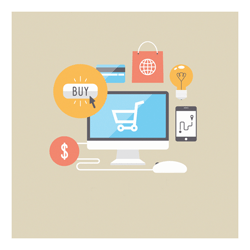A Strong Case for Content in Commerce

by Amberly Dressler
21 Feb, 2017
There's some good news for online retailers frustrated with low conversion rates among their first-time visitors.
Episerver recently surveyed more than 1,100 consumers and found that 92 percent of them visit a brand's website for the first time to do something other than make a purchase.
While this might be an " aha" moment for some merchants, this finding doesn't mean initial visits should be devalued. Rather, brands must present an experience that is worthy of a return visit like optimizing the site with high-quality visuals (e.g., 360-degree product views, product videos), fit technology (that predicts sizing based on personal specs and how similar brands fit), reviews that allow for user photos to better assist with purchase decisions, wish-list functionality or 'remember-me' shopping carts, and, likely most important, complete and accurate product information.
In fact, Episerver found that 98 percent of shoppers have been dissuaded from completing a purchase because of incomplete or incorrect content, with a third (32 percent) of consumers being dissuaded every time - a powerful testament to the importance of content in commerce.
"Just as a poorly designed storefront or cluttered displays can deter shoppers from a physical store, a website or mobile app with lackluster content can turn off consumers and in many cases, discourage them from making a purchase," said Kennedy. "Our study shows consumers really care about content when shopping online, not only the quality and accuracy, but also how it's delivered to them. Complete and accurate content is now table stakes, and brands looking to go above and beyond must consider personalization."
Since we know that first-time visitors are more often in an exploration stage rather than in purchasing mode, it's critical for brands to try and capture a buyer's email address during the first visit in order to send personalized promotions and recommendations to encourage them to return. While popups and interstitials on mobile devices will start resulting in Google penalties, those served on desktop devices are often less obtrusive (if even expected) and with the right incentive, could improve the chances of a user providing their email address.
Of course remarketing via email isn't a retailer's only option, and they should actively explore dynamic ads (that present the exact products a person was looking at) if they aren't already. When a person finally does return to the site, offering a personalized experience (which begins and ends with the content served) is absolutely critical to build upon that initial visit. Consider the following findings from Episerver:
Episerver recently surveyed more than 1,100 consumers and found that 92 percent of them visit a brand's website for the first time to do something other than make a purchase.
While this might be an " aha" moment for some merchants, this finding doesn't mean initial visits should be devalued. Rather, brands must present an experience that is worthy of a return visit like optimizing the site with high-quality visuals (e.g., 360-degree product views, product videos), fit technology (that predicts sizing based on personal specs and how similar brands fit), reviews that allow for user photos to better assist with purchase decisions, wish-list functionality or 'remember-me' shopping carts, and, likely most important, complete and accurate product information.
In fact, Episerver found that 98 percent of shoppers have been dissuaded from completing a purchase because of incomplete or incorrect content, with a third (32 percent) of consumers being dissuaded every time - a powerful testament to the importance of content in commerce.
"Just as a poorly designed storefront or cluttered displays can deter shoppers from a physical store, a website or mobile app with lackluster content can turn off consumers and in many cases, discourage them from making a purchase," said Kennedy. "Our study shows consumers really care about content when shopping online, not only the quality and accuracy, but also how it's delivered to them. Complete and accurate content is now table stakes, and brands looking to go above and beyond must consider personalization."
Since we know that first-time visitors are more often in an exploration stage rather than in purchasing mode, it's critical for brands to try and capture a buyer's email address during the first visit in order to send personalized promotions and recommendations to encourage them to return. While popups and interstitials on mobile devices will start resulting in Google penalties, those served on desktop devices are often less obtrusive (if even expected) and with the right incentive, could improve the chances of a user providing their email address.
Of course remarketing via email isn't a retailer's only option, and they should actively explore dynamic ads (that present the exact products a person was looking at) if they aren't already. When a person finally does return to the site, offering a personalized experience (which begins and ends with the content served) is absolutely critical to build upon that initial visit. Consider the following findings from Episerver:
- Nearly two-thirds (59 percent) of shoppers are interested in personalization as a part of their online shopping experience, and 43 percent are open to personalized in-store experiences.
- Over a third of shoppers (35 percent) feel brands do a poor or very poor job of customizing the online shopping experience, with just 7 percent believing that brands do this very well.
- Twenty-one percent of shoppers are more likely to purchase again from brands that do more to personalize their digital experience than those that do not, and nearly the same number are more loyal (17 percent).
+ While you're here, check out, "Clever Ways to Optimize the Web Experience for Conversion."

Amberly Dressler
Head of analyst relations, public relations, customer advocacy (People Heroes), customer community, content marketing (full funnel/lifecycle), content operations and optimization, reputation management and social media. Leads a team of nine superstars to exceed our goals multi-fold.







